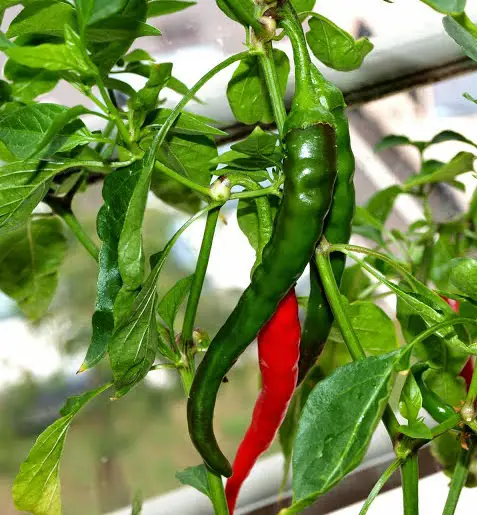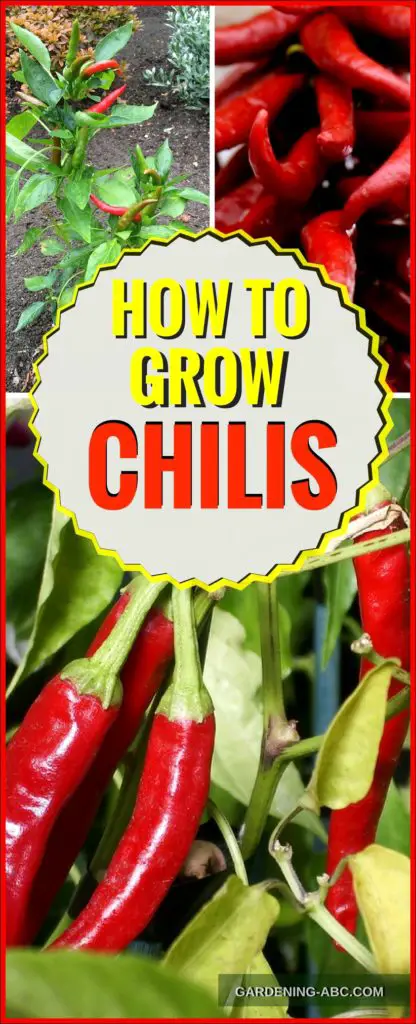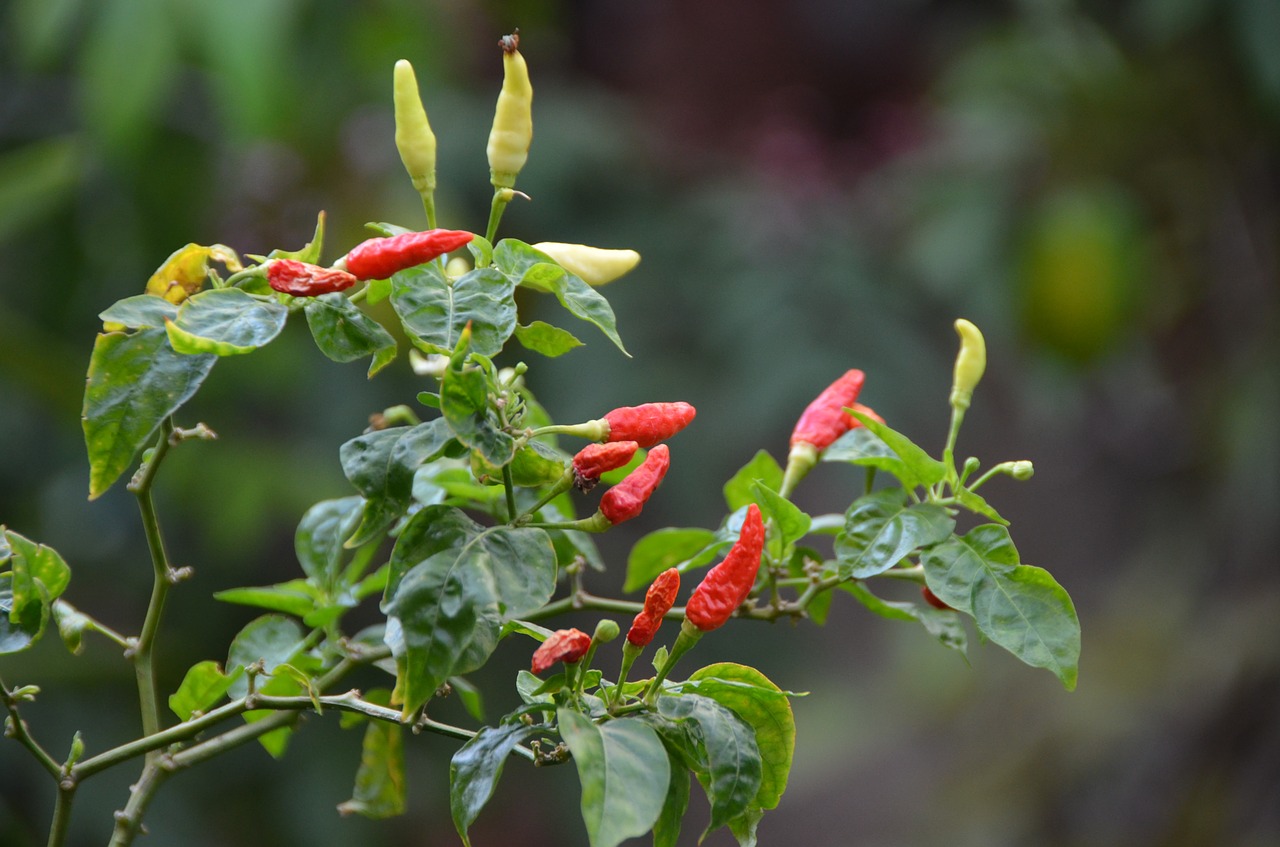We use affiliate links to run our site. When you buy through links on our site, we may earn an affiliate commission, without any added cost to you. Learn more
Welcome to the world of growing your own red hot chili peppers! If you’re a fan of spicy food, there’s nothing quite like the satisfaction of adding homegrown chilis to your favorite dishes.
Not only do they pack a flavorful punch, but growing them is also a fun and rewarding experience that doesn’t require a lot of space or expertise.
Peppers are full of vitamins A, C, Iron, and potassium. and there are two types of peppers sweet Bell peppers and hot chili peppers. This article is all about growing red hot
In this article, I will share my gardening experience to give you all the tips and tricks you need to successfully grow your own red hot chili peppers in your garden.
How to Grow Chili Peppers?
The Chillies are hot due to the presence of a chemical called capsaicin which is present mainly in the area of the wall and around the seeds. They are very popular among gardeners.
The chilies are actually very easy to grow. You can grow them both in the backyard or in containers.
Chili is a warm-season crop like tomatoes. The ideal temperature for growing chilis ranges from 70 to 80 deg F during the daytime and 60 to 70 deg F at night.
You can grow chilies both from seeds and seedlings. For seed germination, you required a minimum temperature of 68 deg F. It requires at least 6 hours of sunlight daily so choose the place wisely.
Chilies require a lot of potassium in the soil. If your fertilizer or compost contains a large chunk of nitrogen and a very less amount of potassium, you might get lush green foliage but fruit-bearing will be a problem.
So choose your composting ingredients (or fertilizers) wisely.
Watering A Chili Plant:
You need to provide a lot of water for your plant. It is true that chilies don’t like to grow on swamps but they dislike dry soil even more.
Use a good potting mix if you are growing chilies in containers. For growing chili peppers in the backyard, make sure you have proper drainage in the soil. You can also add a cover of mulch to preserve water.
It is for the betterment of the plant that you need to prune chilis it a bit from time to time. Chili plants have “not so strong” branches so it would be better to lose some weight of the plant.
You should also provide some sort of support for the plant. They are a self-pollinating plant so you don’t need to worry too much about the pollination of the flowers.
Pest Problems of A Chili Plant:
Chilies are generally pest free, but in some cases, you might encounter some like:
Aphids:
These are generally a threat to the plants when it starts growing new leaves. Aphids leave a sticky substance called honeydew on the plant. The best way to get rid of this problem is to remove them manually. In most cases, you won’t require any sprays or mixtures.
Nematodes:
It is a very common phenomenon and can cause the plant to wilt. Read more about nematodes before trying any step.
White-fly:
This problem can be handled by using some organic sprays on the plant.
Fungal Disease:
In case the humidity level goes very high (in a
Harvesting Chili Peppers:

Peppers can be harvested by simply just plucking the fruit from the plant. Regular pickings ensure more fruits for the future. Select the green ones while they are still shiny and plump.
You can also choose to pick them when they become red. If you have planned for flakes or powder leave them on the plant as it is till they dry.
How to Store chilies properly:
Use a sealed bag to preserve chilies. It will last up to one and a half weeks if you store them properly in a refrigerator.
What type of soil is best for growing red hot chili peppers?
Red hot chili peppers love well-draining soil that is rich in potassium, so it’s important to use a good quality potting mix or compost when planting them.
How long does it take for red hot chili peppers to mature?
Well, typically it takes around 70 to 85 days for red hot chili peppers to mature from the time of planting. However, it can depend on various factors such as weather, soil quality, and the type of chili pepper.
Can red hot chili peppers be grown indoors?
Absolutely! Red hot chili peppers can be grown indoors as long as they have access to at least six hours of sunlight a day. You can use a sunny windowsill, a grow light, or even a greenhouse to create the right growing conditions.
How can I tell if my red hot chili peppers are ready to be harvested?
You can tell if red hot chili peppers are ready to be harvested by checking their color. They should be picked when they are still shiny and plump if you want them to be green, or when they have turned red if you prefer them ripe. Keep in mind that the longer they stay on the plant, the spicier they will become!
Conclusion:
Thank you for reading our article on how to grow red hot chili peppers in your garden. We hope this guide has inspired you to try your hand at growing these fiery peppers and added some zest to your gardening routine. Don’t forget to share this post with your friends and family who are looking to spice up their gardens and meals.
We have many more articles and resources on our site for all your gardening needs. From growing herbs and vegetables to creating beautiful landscapes, we have you covered. So, keep exploring and learning with us, and let’s grow something amazing together!
Do you like chilies? How is your experience? Share it with us:

Amazon and the Amazon logo are trademarks of Amazon.com, Inc, or its affiliates.

I have many chilli plants and all of them drop flowers and have not born any fruit
Highly educative. Thank you.